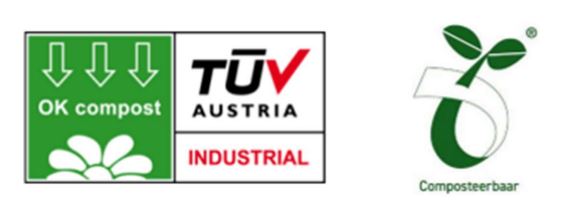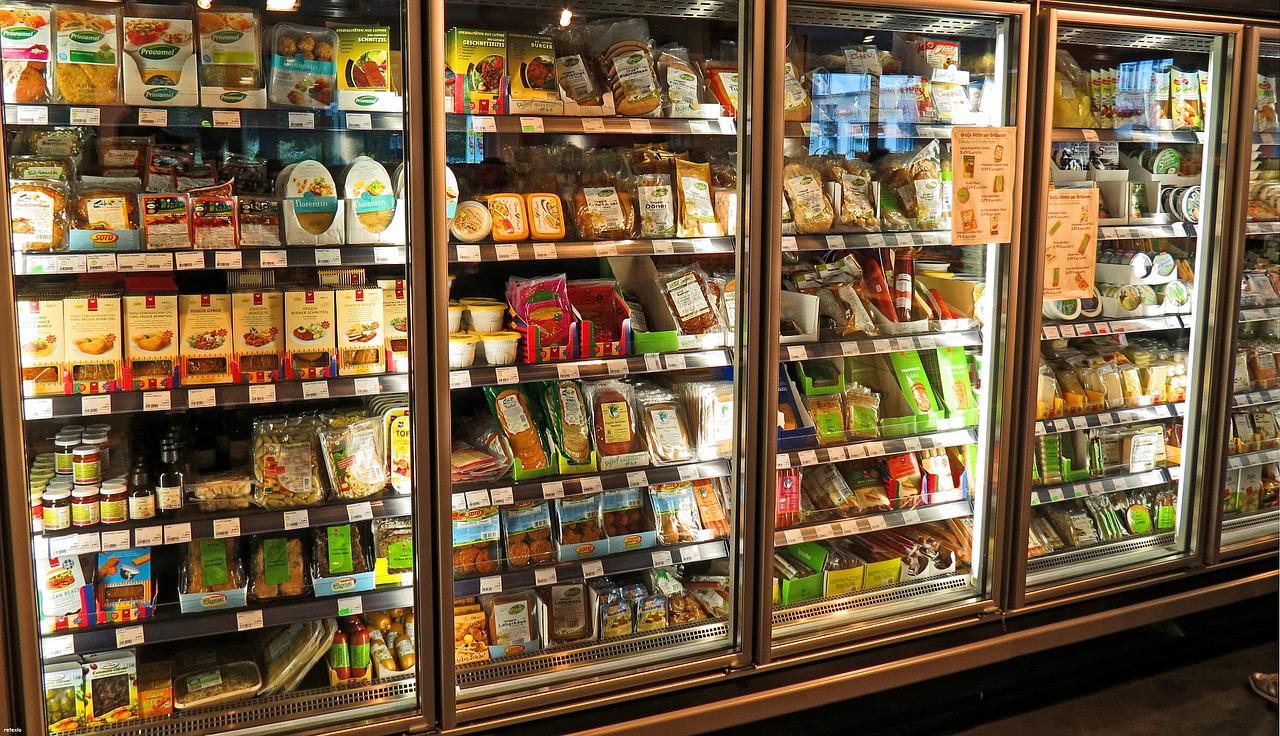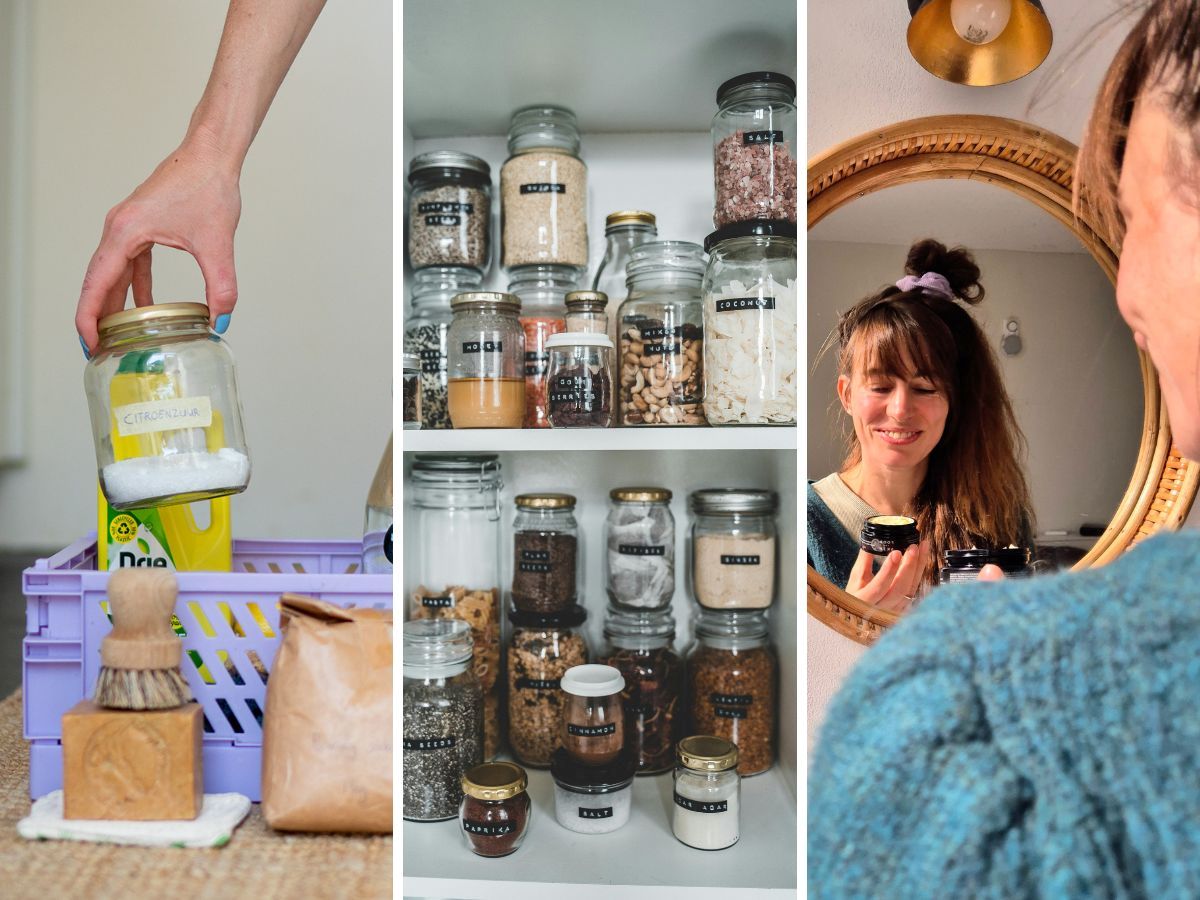‘Plastic is bad!‘, ’Too bad about that plastic packaging‘, ’That's not very sustainable of you'. Plastic and people who use plastic can regularly - especially in the green bubble - count on quite a bit of criticism. But is it all really so black and white? Together with Rob Versfeld, packaging expert at Milieu Centraal, I dive into the world of plastic. Did you already know this about the most hated packaging material?
Plastic packaging: so it's not so black and white
When you go shopping and start paying a little attention to packaging materials, the terms swirl around your ears. Soon you find out that there are different types of plastic: ‘biobased plastic’, ‘bioplastic’, ‘compostable plastic’, ‘plastic that is recyclable’ or ‘recycled plastic’ you also have. So which is the best and most sustainable choice? Or is it better to choose another packaging material such as paper or glass? In this article, I will help you on your way, together with Milieu Centraal, so that you can make a conscious(er) choice in the supermarket from now on. Spoiler: so it's not so black and white.
How bad are those plastic containers?
If you look at a product and start dissecting where the negative impact comes from, the production of our food is the most damaging to the planet. Transporting our food can also have a significant share, it depends a bit on how it gets here. By plane and refrigerated is the most taxing, on a big slow boat considerably less so. And that packaging? Well, so that's not incredibly bad. Only 10% of the product's negative impact comes from packaging. So 90% comes from other things.
Source: The hidden impact (Babette Porcelijn) and Climate Talks.
The basics: plastic is made from petroleum
What is plastic made of? Let's start with that, also to better understand this criticism. Plastic is originally a synthetic substance, the result of a chemical process that incorporates several natural materials such as petroleum. Plastic has a bad name because of the litter problem. A lot of plastic ends up in nature and hardly decomposes. It falls apart and then microplastics remain, which enter the food chain via animals. Microplastics are a big environmental problem. But many people are also not fond of plastic because it is made from petroleum, a fossil fuel we want to get rid of because it is one of the causes of climate change. This explains the bad name and criticism. But there is also another side.
Plastic packaging is not so ‘bad’
What is less often talked about is that plastic also has a number of positive properties: it is super light, allowing products packed in plastic to be transported in an environmentally conscious way. It is hard, strong, can withstand different temperatures, it comes in all the colours and shapes you want and you can recycle it well. In short, it's not fair to just label plastic as ‘bad’. And alternatives, but I'll come to that in a moment, are not necessarily more sustainable.
Different types of plastic
So plastic has good and bad properties, but one plastic is not the other. We see this all the time on those different packaging too. So what are the differences and can you choose a better plastic or are they all the same? And what about other packaging materials like glass and paper? They seem to be less under fire, but how justified is that? We take you through the different types.
Biobased plastic: plastic made from plants
We have now progressed so much that we don't necessarily need to get plastic from petroleum. For example, we can make plastic from renewable raw materials such as maize, grain and sugar cane. This is called biobased plastic. The advantage of bio-based plastic is that the raw materials absorb CO2 as they grow (as plants) and that they are renewable, because a plant keeps growing. This is not the case with petroleum. Furthermore, biobased plastics are just as recyclable as - virgin - plastics made from petroleum. OK, so that's pretty good news you will now think. So there is a better alternative. There certainly is, but even those biobased plastics, nice as the name sounds, are not everything.
Growing that maize, grain and sugar cane requires farmland. A lot of arable land. And farmland is scarce. It is difficult to find out, for instance, whether rainforest has been cut down to make biobased plastic and how it was cultivated. Perhaps a lot of fertilisers or pesticides were used, which in turn damaged biodiversity. For now, there is no label that can say: this biobased plastic is sustainable or organically produced. This makes it difficult to say whether biobased plastic is more environmentally friendly or - on the contrary - more unfriendly than plastic made from petroleum. So even the latter could be.
Compostable plastic: sounds sustainable, but disappoints
‘Compostable plastic’ is another term you often see. Sounds pretty good: plastic that becomes compost again in nature. But unfortunately, that's not how it works, Rob from Milieu Centraal teaches me. The first thing you need to know about this is that compostable plastic produces almost no compost. It is converted under optimal conditions (in an industrial composting plant with a temperature of 60°C) into natural gases, including CO2. As litter, compostable plastic simply remains in nature, because the outdoors is not a 60°C composting plant. Also, compostable plastic is not currently recycled. Theoretically, it could be, but it is not sorted that way at the moment. So compostable plastic should just go with the residual waste to be incinerated!
Do you see ‘compostable’, ‘biodegradable’ or ‘biodegradable’ on a package? Or do you see a label indicating that it is compostable? In all these cases, the plastic should ‘just’ go with the residual waste. Not with the VGF waste, not on the compost heap and definitely not with the PMD waste (plastic, metal and drink cartons). Only plastics that can be recycled are allowed in PMD waste and compostable plastic cannot. If you throw it in there, you contaminate the waste and it cannot be recycled as well. So really don't do it!
At least by throwing compostable plastic with the residual waste and having it burnt, something positive is happening with this piece of plastic: in Dutch waste plants, we generate energy from residual waste incineration.
Finally, compostable plastic says nothing about the origin of the material. Compostable plastic exists from petroleum, but also from biobased materials such as corn and grain. However, there are labels for compostable plastic. See one of these labels? Then throw the packaging in the residual waste as well.
Biodegradable plastic
Biodegradable or biodegradable plastic is also a form of compostable plastic, but it is slightly different. With biodegradable or biodegradable plastic, the plastic packaging can theoretically be broken down by micro-organisms, i.e. without an industrial composting plant. Only here, again, the conditions have to be so perfect that this often doesn't work that way in practice. Often the temperature is too low and it can be too dry. The quantities of oxygen, fungi, bacteria, nutrients and the thickness of the piece of plastic also play a role in composting. So for this reason, biodegradable and biodegradable plastic should also ‘just’ go with the residual waste, whatever clever marketers say about their product.
Rob: ‘You also occasionally come across the term ‘bioplastics’ against. But that doesn't really mean much. This term is used for both biobased plastic and compostable plastic. We would like this term to no longer be used, to avoid confusion.’

There is one exception: this is allowed in organic waste
GFT rubbish bags with the Seedling logo or OK Compost logo If they are filled with organic waste, they are the only ones allowed in the bio-bin.
Recycled plastic
Finally, you have recycled plastic. This is plastic made from old plastic. No petroleum and no farmland is needed to make these packaging materials. And it can be done! Because plastic can be recycled very well without losing quality. That makes high-quality recycled plastic a good and sustainable material. How do you recognise this? It says on the packaging that it is made of recycled plastic and that it is highly recyclable. These are two different things! Rob: ‘Recycled’ should not be confused with the term ‘recyclable’. If you only see the word ‘recyclable’ on a packaging, you never know if it will actually be recycled when you throw it away. If it says ‘recycled’ on it, you know one thing for sure: it has already been recycled once!’
Step-by-step shopping plan
Okay, we have now covered all types of plastics. Are you still following it? If you go shopping this week, it's pretty hard to go and check all those packages one by one. You probably have other things to do. Is there a quick check? Yes there is!
- Don't be too strict! Remember that packaging is often useful too. They protect products, preventing waste and spoilage. Ultimately, it is the production of our food that is the most damaging. Choosing eco-friendly products, such as vegetarian and vegan products, local and seasonal products and not wasting food, is much more important in making a sustainable choice than that packaging.
- If you still want to pay a little attention to packaging materials, Milieu Centraal has some tips: Try to avoid one-way glass and packaging consisting of multiple materials (such as chip bags). Producing and recycling one-way glass consumes a lot of energy. Multi-material packaging can only be ‘downcycled’, with a loss of quality. In contrast, deposit glass and recycled plastic which is easy to recycle then again, sustainable choices. Certified paper with label can also be a good choice if you keep it clean and dry and collect it separately, making it easy to recycle. Paper is a bit heavier than plastic in transport, though. You can also buy packaging-free products or pack products yourself. Ask for cloth fruit and vegetable bags and bread bags for your birthday and start collecting glass preserving jars.
- Try to avoid black plastic as much as possible (it cannot be sorted).
- Also, buying bulk packs has an environmental advantage, you have to use the whole contents.
Want to know more about waste and reducing waste? Then check out this handy page from Milieu Centraal.
More sustainable tips from thegreenlist.nl
- Even better: multiple ways of refilling.
- On plastic diet: 10 tips to reduce your plastic consumption.
- Palm oil: This too is not so black and white.
- Cobalt: it's in every battery, but what do you know?
Photo credits: Pixabay.












